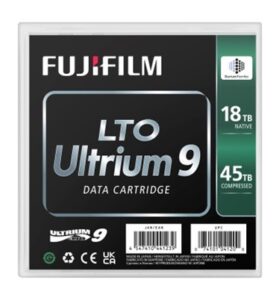 I attended the International Security Conference West (ISC West) in Las Vegas last week. The show was well attended with some 20,000 visitors packing the aisles and mobbing the booths of some 650 vendors. The show covers everything from video surveillance to computer and communications security, to physical plant security, loss prevention, and more.
I attended the International Security Conference West (ISC West) in Las Vegas last week. The show was well attended with some 20,000 visitors packing the aisles and mobbing the booths of some 650 vendors. The show covers everything from video surveillance to computer and communications security, to physical plant security, loss prevention, and more.
A few items struck me as a first-time visitor to the show, namely, entire booths dedicated to gunshot detection devices and others dedicated to things like drone detection. It’s a sad sign of the times when security professionals have to install gunshot detection devices to improve response time and mitigate deadly intrusions. In the case of drone detection, if you are being spied upon from above, no worries drone detection radar can now electronically jam unmanned aerial vehicles and can even deliver a kill shot as a last resort.
The other item most relevant to me was the fact that this industry stores almost all of its video surveillance content on expensive, energy-intensive hard disk drives. That’s a problem in general, but even more so when security professionals are being besieged by any number of new budget-draining threats like gun-toting intruders and nefarious aerial snoopers.

With an increasing threat landscape, video surveillance is becoming even more important today than it was just five years ago. Accordingly, organizations are increasing camera counts with better resolution. This leads to more video feeds that need to be monitored which is now being supported by sophisticated AI driven video analytics that can provide a heads up to the security team. For example, if an employee parking garage structure is for cars only, the entrance of a box truck would sound an alarm advising the security team something’s not right. Or a group of persons passing through a restricted portal might also trigger an alarm.
With AI enabled surveillance, cameras understand what they are seeing and as a result humans are more effective at threat detection. AI also enables sophisticated analytics with machine learning capable of process improvement, trend identification, cost reduction, profit enhancement, all leading to competitive advantages. With AI, the value of the video surveillance content increases dramatically, therefore the more content that can be retained the better. AI/ML also begets more data in the form of analytics metadata and subsets of content further adding to the retention requirement.
The security industry is under just as much pressure to reduce costs and energy consumption as any other industry. The ascending management teams are genuinely concerned about Environmental, Social and Governance (ESG) issues and initiatives, and fully respect carbon reduction efforts. The technical teams I met with at about a dozen or so Video Management Software (VMS) companies at ISC West admitted that their clients are installing more cameras, with higher resolution and frame rates, with longer desired retention periods, and storage of that content is becoming a pain point in terms of cost and energy because it’s all on 24/7 spinning disk. What ends-up happening is that content gets deleted prematurely or retained at a reduced frame rate, thus defeating the purpose of the surveillance in the first place.
Not one of the VMS teams I met with knew what LTO is. When I produced a palm sized LTO-9 cartridge with 18 TB capacity, that consumes 87% less energy than HDD, produces 97% less CO2e, costs 80% less than HDD to operate, lasts for decades and easily scales, their eyes lit up almost in amazement. When it comes to tape, their point of reference, if any depending on their age, is VHS which was replaced in the security industry almost completely by HDD around 2008. I was met with various questions on LTO: “Can we point to it as a storage target? Can it easily be integrated into our VMS? Is it operator friendly”? Fortunately, I was not alone as I was walking the show with industry expert Jay Bartlett, CEO of Cozaint and his CTO, Nauzad Sadry. Their answer was “yes, yes, and yes”!
 Finally, a high density cartridge that can be used for video surveillance in the form of LTO-9 is now a solution for today’s pain points in video surveillance retention including cost, power, scalability, longevity and ease of use. With Cozaint’s solution, a breakthrough has been found. Understanding how to properly incorporate LTO to support HDD in a 2-tier video storage system, Cozaint’s askALICE delivers a seamless solution. What Cozaint learned was that the video management software (VMS) had to be LTO aware and allow the VMS operator to move the software timeline and playback any and all recorded video. With such functionality, users can now retrieve and review all the video stored in such a system and not be concerned about the how the video is delivered or where it’s retained.
Finally, a high density cartridge that can be used for video surveillance in the form of LTO-9 is now a solution for today’s pain points in video surveillance retention including cost, power, scalability, longevity and ease of use. With Cozaint’s solution, a breakthrough has been found. Understanding how to properly incorporate LTO to support HDD in a 2-tier video storage system, Cozaint’s askALICE delivers a seamless solution. What Cozaint learned was that the video management software (VMS) had to be LTO aware and allow the VMS operator to move the software timeline and playback any and all recorded video. With such functionality, users can now retrieve and review all the video stored in such a system and not be concerned about the how the video is delivered or where it’s retained.
The contrast between the Media & Entertainment (M&E) industry and the Video Surveillance (VS) market is stark, to say the least. In M&E, LTO is the defacto standard for file sharing, video file protection, and retention. Its value prop is tried and true. But not so in the VS market as mentioned above. For sure tape is servicing the need for some very long term and high-volume video surveillance use cases. Take an airport for example with 2,000 cameras and two years of retention required. Clearly, it would be cost-prohibitive to retain that VS content on expensive, energy-intensive hard disk arrays. Or take a manufacturer of tech components that incorporate rare earth medals that are prone to theft by employees. That manufacturing operation is painstakingly surveilled and video content retained for multiple years. Tape to the rescue in this case too. But the majority of the market has not embraced or been exposed to the concept of a high density cartridge solution specifically for video surveillance that can reduce cost, power, and enable longer retention periods. Not to mention a medium that can be easily removed from the network thereby creating an air gap to prevent unauthorized access or ransomware infection.
According to my research, the video surveillance market consumes as much as 8% of all HDD capacity shipments. That’s about 100 exabytes of content residing on expensive, energy intensive technology. To give you a sense of the magnitude of 100 exabytes, the 5 year TCO for economy disk would be approximately $22.2 Billion, but only $4.8 Billion for automated tape systems, 78% less. This kind of savings can be leveraged in a sensible 2-tier storage approach as offered by Cozaint and available for any VMS provider to deliver as a value-added benefit to their customers. For a detailed video surveillance cost calculator incorporating LTO, go to:
So while security managers have new threats to worry about like deadly intruders on the ground, spies in the sky, and so many more that they need to sink dollars into, at least there is a better way to cost-effectively retain increasingly important video surveillance content.
